Hands down, Filipino food is the most unique cuisine in the Philippines. You could spend a lifetime exploring the street stalls of this 4,000-island archipelago and not taste everything that the Philippines has to offer.
From live monkey brains to fertilized eggs, Filipino cuisine has filled the food rumor mill for some time.
Why is this? The Philippines have been under the rule of pretty much everyone in the world at some point. Not really, but close. Spain called it there’s for awhile, the Chinese too, even the USA. Every country that colonized the Philippines left a food footprint on its cuisine, which has been meshed and melded into a wickedly interesting food world today.
The most common ingredients that have made their way into the foods of the varying islands of the country are a sugarcane derived vinegar, coconut, bananas/plantains, and pork pork pork pork. The dishes are unique and are often hard to determine the ingredients that make them up. Here are a few main dishes that you should try when you venture to the Philippines.
Contents
Adobo
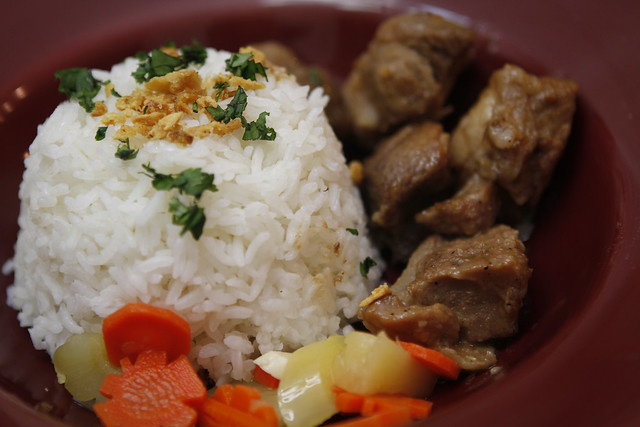
Typically a pork derived dish, it can also be made with the meat of the day, and is simmered in a pot for a looooong time with vinegar, bay leaves, garlic and salt & pepper. Somehow this seemingly simple concoction forms a flavor orgasm unlike anything you’ve ever experienced. Every family matriarch has her claimed, “best” varietal so be careful who you say has the best Adobo when sitting down to dinner.
Pancit
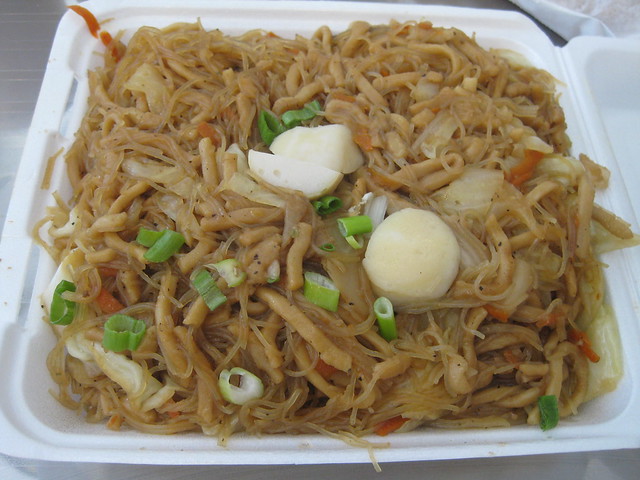
Pancit is a noodle dish that has many varieties. Bihon which is made of very thin rice noodles fried with soy sauce, meat and citrus. Sotangon is made with cellophane noodles, chicken broth, mushrooms and chicken. A thicker noodle and thicker golden shrimp sauce make up Palabok.
Kinilaw
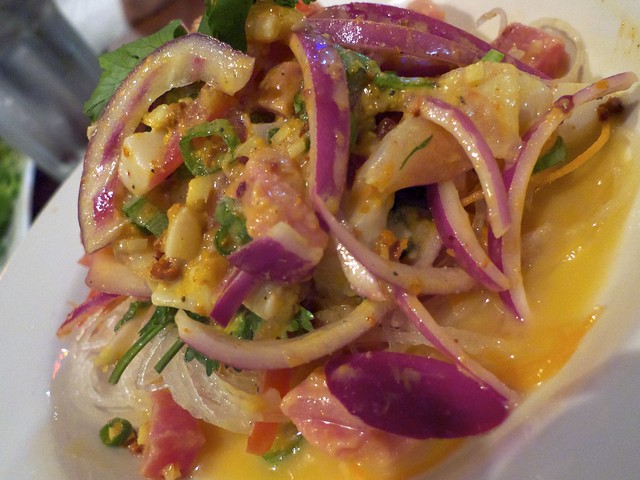
My all time favorite dish in the Philippines, that I’ve tried, is Kinilaw. It’s the Filipino version of ceviche. Milkfish is typically pickled with vinegar and/or calamansi (small lime/orange like fruit).
Lechon
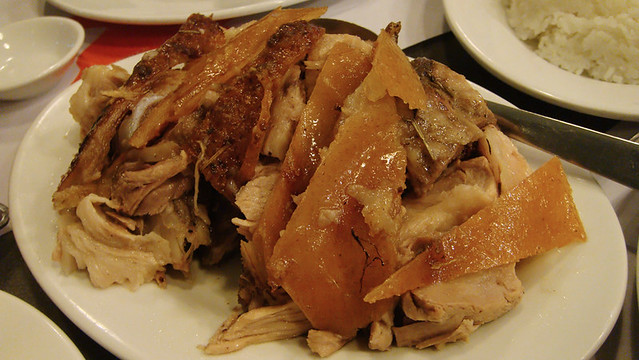
This whole-roasted suckling pig is the stem of many dishes in Filipino cuisine. From pork belly all the way to deep-fried pork knuckles, every ounce of the pig is accounted for in this cuisine. Stay away from Sisig if you’re faint at heart when it comes to body parts, it’s a hash of sorts with the pig’s cheeks, snout, ears, and organs tossed with citrus and spices.
Pinakbet

This veggie stew can hold its own in a country full of meat. Eggplant, string beans and bitter melon are typically stewed with coconut milk and flavored with bagoong.
Chicken Inasal

The BBQ-ed chicken to end all BBQ-ed chicken. True story, I was in Puerto Princessa for probably 5 days total and ate this every single day I was there. It’s that good. The chicken is marinated in lemongrass, calamansi, salt, pepper, garlic and achuette oil (a Mexican oil derived from the Annatto seeds). It’s typically served with garlic rice and an orange oil drizzle to make you melt.
Kare-Kare

An oxtail stew with a ground toasted rice and crushed peanut sauce. This is one of those that starts arguments in families debating about whose is best.
Sinigang

This is a throw everything in the pot kind of sour stew. Typically made of prawns, fish, pork and beef thrown together with tamarind, kamias, and tomatoes. Rice is always served on the side and sometimes veggies like string beans or taro root also accompany it.
Betute
If you are a fiend for frog legs, try this frog dish on steroids. Filipinos take a whole frog and stuff it with minced pork and then deep-fry it.
Balut
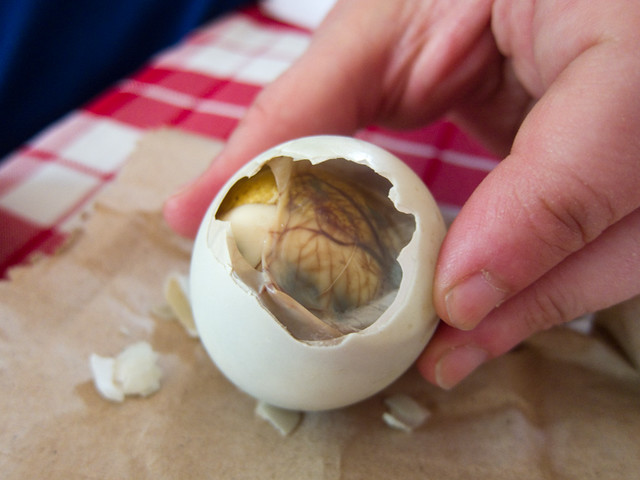
Definitely not for the faint of heart, but an infamously famous Filipino dish is the balut. This is a 17-day-old duck embryo. It’s boiled, and served with salt and vinegar. Grab a beer to wash this scrumptious morsel down.
Halo-Halo
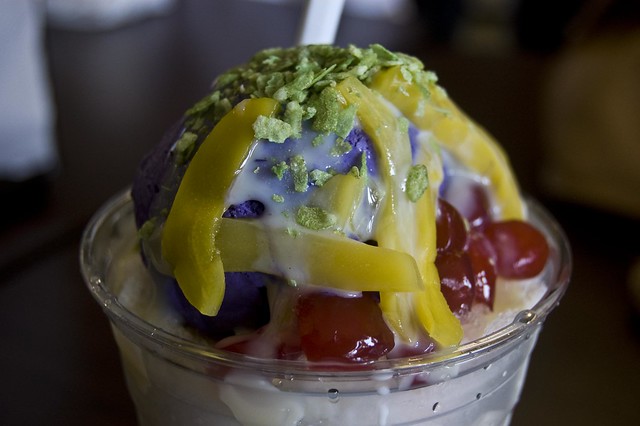
Probably one of the most iconic desserts in the world. This thing is a monster and is picking up traction as a hipster dish across the world. Traditionally, Halo-Halo is made of shaved ice, leche flan, gulaman, ube, banana, kaong, beans and garbanzos, milk and a scoop of ube ice cream. Everything from sprinkles to corn flakes have made their way onto this colorful dessert.
